Mar-Apr 2004 On The Radar
What began only a few years ago as a little more than a tease, glass cockpits have made their way to the general-aviation mainstream. Steam gauges are giving way to dream gauges. Upstarts Lancair and Cirrus were the first to show up with the big display screens in certified aircraft and neither has looked back. Last year, Cirrus announced it would sell only glass-paneled SR20 and SR22s, and immediately began shipping its aircraft equipped with the Avidyne Entegra.
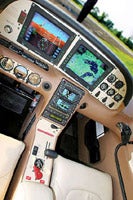 Going, Going Glass!
Going, Going Glass!
What began only a few years ago as a little more than a tease, glass cockpits have made their way to the general-aviation mainstream. Steam gauges are giving way to dream gauges. Upstarts Lancair and Cirrus were the first to show up with the big display screens in certified aircraft and neither has looked back. Last year, Cirrus announced it would sell only glass-paneled SR20 and SR22s, and immediately began shipping its aircraft equipped with the Avidyne Entegra. Lancair also offers similarly equipped Columbias. By Fall 2003, Cessna announced it had gone Garmin, offering the new G1000 glass panel in both Skylanes and Stationairs for the coming year. This month, Diamond begins deliveries of its composite four-place DA40, also with the Garmin glass, and New Piper Aircraft announced it's going to begin offering the Avidyne Entegra in its new 6X/6XT and Saratoga airframes. While other airframe manufacturers, like Mooney and Raytheon, haven't announced any final decisions, it's no longer a matter of if they'll go glass, but when.
Pilot reaction to the new cockpits has been strong across the board. Cessna sold out its anticipated first-year production run of the G1000-equipped C-182s. Cirrus has more than 150 glass-paneled aircraft on order. Even airplanes that aren't in production are announcing their commitment to glass. The in-development Cessna Mustang will go Garmin, as will the HondaJet and Diamond D-Jet; Adams Aircraft has sided with Avidyne for the A500 and A700, and so on.
 |
| Diamond DA-40 |
 |
| Lancair 400 |
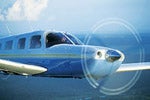 |
| New Piper Saratoga II HP |
However, the rapid embrace of both pilots and their partners in the manufacturing community has left a few loose ends. Engineers are still addressing lingering compatibility issues to allow existing autopilots, weather surveillance and data linking into these glass panels, but they also must allow for new technologies waiting in the wings, like Highway in the Sky (HITS), Synthetic Vision and more.
The rush of new technology is giving others fits---literally. The FAA's Industry Standardization (FITS) group is taking a hard look at the benefits and challenges that come with these new "technically advanced aircraft" (TAA). The group, made up from a who's who list of the aviation industry, is looking into creating voluntary standards of operation, and specifically operational training for the new wunderkind. Not surprisingly, the aviation insurance industry is a key player.
"It's the biggest new issue facing the new aircraft out there," says Avemco's chief underwriting officer Jim Lauerman. "We're on the cusp in this industry of some real breakthroughs and it's all around the avionics."
Although the recommendations of the FITS group are far from complete, Lauerman thinks one likely outcome is an insurance industry requirement for some form of approved training prior to underwriting. Although the FAA may stop short of writing new regs for the glass-cockpit crew, sound judgment (and probably your insurance company) will require some additional training.
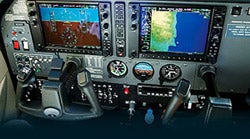 |
| Garmin G1000 in a Cessna Skylane |
Alan Klapmeier, president and CEO of Cirrus Design, has been a driving force behind the shift to glass and welcomes the change as a milestone: "The good news is that the new technology that is changing and growing many industries can have the same effect on personal aviation. As with the Windows operating system on PCs, a user-friendly instrument panel dominated by a large PFD (primary flight display) opens the world of aviation to a wider audience. One hundred years from now, the introduction of low-cost, intuitive PFDs will be seen as the innovation that sparked new growth in the GA industry."
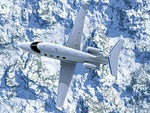 | 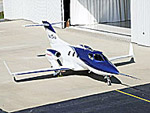 |
| Avocet Projet | HondaJet |
And Now The Jet Set
If you're tuning in for an update on the latest episode of "All My Fanjets," the exciting new soap opera on the race for new personal jets, here you go: There's at least one new character that's entered the picture, and the possibility of a secret second.
Honda long rumored to be sniffing the airplane business, announced the development of the HF118 Turbofan Aircraft Engine. The FADEC-controlled compact kerosene burner has been in testing since 1999 and was developed ostensibly to power the company's still-experimental and "we're not sure we're even gonna make this" business jet, the HondaJet. The car company's ideas call for a six-seater with a projected max cruise of 420 knots.
Avocet Aircraft unveiled the ProJet, a six-to-eight-seat twin expected to start delivery in late 2006. The new jet comes from Cleveland-based Jet Partners' UltraJet Division, in partnership with Israel Aircraft Industries. The single-pilot $2-million ProJet is projected to cruise at 365 knots and have a 41,000-foot ceiling.
And if you're one of the thousands of pilots who have put their money down, here's how your bet is looking since the contenders left the gate.
| Aircraft | Price | Certification Date |
Max Speed |
Max Op. Alt. |
| Eclipse 500 | $975,000 | 1Q 2006 | 375 | FL410 |
| Cessna Mustang | $2.395M | mid-2006 | 340 | FL410 |
| Adam 700 | $1.995M | 4Q 2004 | 340 | FL410 |
| Avocet ProJet | $2M | 4Q 2006 | 365 | FL410 |
| Diamond D-Jet | $850,000 | 1Q 2006 | 315 | FL250 |
| Safire Jet | $1.4M | mid-2006 | 380 | FL410 |
Stimulating Simulating
But the race for more and better personal transportation isn't limited to the pure jets. Demand for the larger twins and single-engine turbines has heated up as well, causing a boom in simulator training. SimCom just finished renovations in their Scottsdale, Ariz., facility to make room for a new "virtual" Pilatus PC-12. The company regularly conducts simulator flight training for Beech Barons, Dukes, Cessna twins, Socata TBMs, Aerostars, King Airs, Malibu/Meridian/Mirages, Piper twin drivers, as well as the who's who of major airliners. But the demand for virtual flying is no longer just for jet jocks.
SimCom used actual PC-12 airplane parts to make the turbine single's cockpit indistinguishable from the real McCoy. The panel is identical to the current production aircraft, with a Honeywell KMD-850, KLN-90B GPS and Garmin 530. The 180-degree wraparound visual-motion cueing system can reproduce just about anything you want, day or night, VFR and instrument meteorological conditions. The need for simulator training is big enough to support a second SimCom PC-12 simulator in Orlando, Fla., as well as pure jet, prop jet and piston training centers in Miami, Fort Pierce and Vero Beach, Fla.; Cincinnati, Ohio; Memphis, Tenn.; St. Louis, Mo.; Dulles, Va.; Minneapolis, Minn.; and Phoenix, Ariz. For more info, contact SimCom at (800) 272-0211 or log on to www.panamacademy.com.
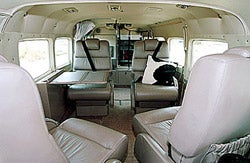 Cessna is reacting to the big interest in turbine singles by adding creature comfort to their wildly successful Caravan series. Suitors can include the Yingling Oasis interior when they order a new aircraft, adding first-class digs to an already impressive load-carrying capability. With leather and cabinetry, video screens for in-flight entertainment and AC power to run your laptop, the new STC for the Oasis interior pushes the C-208 out of the weight-lifting championships deep into executive/personal transport competition. Log on to Cessna's Website at www.cessna.com for more information.
Cessna is reacting to the big interest in turbine singles by adding creature comfort to their wildly successful Caravan series. Suitors can include the Yingling Oasis interior when they order a new aircraft, adding first-class digs to an already impressive load-carrying capability. With leather and cabinetry, video screens for in-flight entertainment and AC power to run your laptop, the new STC for the Oasis interior pushes the C-208 out of the weight-lifting championships deep into executive/personal transport competition. Log on to Cessna's Website at www.cessna.com for more information.
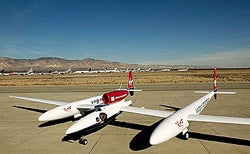 The Ultimate Single-Pilot Jet
The Ultimate Single-Pilot Jet
Despite all the fanfare, there's a late entry in the category from aviation zeitgeist Burt Rutan that may just take the cake. The GlobalFlyer, a single-engine, one-person pressurized jet is designed to fly around the world nonstop, without refueling. The oddity measures 114 feet from wingtip to wingtip and is powered by a Williams Jet FJ44-3 ATW jet engine, drinking from 17 different gas tanks. Don't expect Rutan to accept your deposit for a delivery position quite yet. GlobalFlyer's raison d'etre is to provide billionaire Steve Fossett (think ballooning) a shot at yet another aviation world record. For more information, log on to www.globalflyer.com.
 |
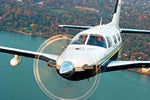 |
Looking Up
The spike in aviation activity isn't limited to the kerosene crowd. Despite the recent bankruptcy of OMF GmbH, makers of the Symphony 260, most general-aviation aircraft makers are in a pretty good mood about the fiscal prospects of 2004. Lancair rolled out its 100th Columbia just days after the powered flight centennial celebration in Kitty Hawk and is chipping away at a sizable backlog of orders. The company has added 40,000 square feet to its Bend, Ore., facilities, and expects to up production to one complete aircraft a day later this year. Cirrus averaged two aircraft sales a day in the final months of 2003 and is ramping up its production to complete the same number of aircraft each day. The Cessna singles factory reports a big leap in activity, and New Piper indicates 2004 sales are healthy as well. The company is also celebrating the 20th birthday of its PA-46 Malibu Mirage and Meridian. Interest rates, projected to remain lo w throughout the year, plus new aviation technologies, are expected to stimulate new aircraft purchases for the remainder of the year.
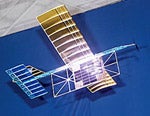 Look, Ma! No Gas!
Look, Ma! No Gas!
Pilots who've had the often dramatic learning experience of trying to fly airplanes without gas are making room for some more members, this time from NASA. Since the beginning of powered flight, aircraft have always dragged fuel along with them---whether in the form of batteries, avgas, solar cells or even bicycle pedals. But a team at the Dryden Flight Research Center is flying an airplane powered solely from ground-based lasers.
The high-powered beam of light actually tracks the aircraft in flight, directing its energy at especially designed photovoltaic cells. "This is the first time that we know of that a plane has been powered only by the energy of a laser light," says Robert Burdine, the laser project test manager.
But don't give up your place in line at the gas pumps yet. The balsa wood/carbon fiber/Mylar airplane is only flying indoors. And just like the smaller airplanes we all fly, with this five-foot wingspan model come some pretty serious useful load restrictions: Max gross is only 11 ounces. Contact the NASA Dryden Flight Research Center at (661) 276-3311 or log on to www.dfrc.nasa.gov for more info.

Subscribe to Our Newsletter
Get the latest Plane & Pilot Magazine stories delivered directly to your inbox





